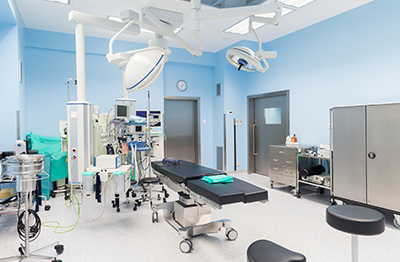Hospital Recovers Energy Without Risk of Supply Air Contamination
The Problem
Hospitals provide an enormous opportunity for energy recovery due to their 24/7/365 operations. Energy from the exhaust air stream can be recovered in the winter and summer to precool or preheat supply air to the hospital and save a lot of energy dollars in the process. One key byproduct of energy recovery that must be avoided in hospitals is contamination of supply air with exhaust air. It is important that no odors or airborne pathogens be transferred into the supply air stream while energy is being recovered. Heat Pipe Technology provides the most reliable form of energy recovery without the threat of cross contamination.
There were major plans for expansions in this Minnesota hospital, and energy recovery was a big part of those plans. Given the cold northern climate, there is plenty of energy that can be recovered from the exhaust air stream to effectively preheat the incoming supply air. As always, it is vital that this energy be recovered with no threat of cross contamination.

The Solution
Heat Pipe Technology's Energy Recovery Heat Pipes (HRM™s) utilize the phase change of the working fluid, capture energy from the warmer air stream, and transfer it to the cooler air stream. In colder climates, such as Minnesota, the energy is transferred from the exhaust air stream to preheat the supply air stream. This reliable method has no moving parts, requires minimal maintenance, and is cross contamination proof.
Use HPT SelectPlus™ to design with this product. Log on to www.heatpipeselect.com.

The Results
In July 2010, one HRM™ was installed in the hospital. The warm exhaust energy was transferred to the cooler supply air stream, yielding immediate savings by preheating the ambient air. Since Heat Pipe Technology's HRM™s are cross contamination proof, no pollutants or airborne pathogens from the exhaust air stream can enter the supply air stream. This ensures that the ventilation requirements are truly met and the indoor air quality of the hospital is maintained.
The estimated savings for this system were just under $12,000 a year, resulting in a simple payback in under 2 years!



